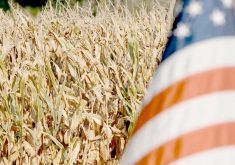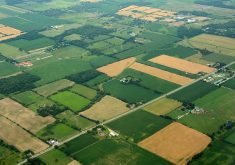Despite demands that Ottawa pass legislation to ban bulk water exports to the United States, a trade lawyer says such a ban would never fly under trade law.
Don McRea of the University of Ottawa told a water conference Aug. 14 that trade law considers water a commodity.
“A ban on bulk water exports would be subject to challenges under WTO (World Trade Organization) and
NAFTA (North American Free Trade Agreement),” he said.
Canada’s answer has been provincial decisions to refuse company proposals to tap into water bodies for export. A resource that has not been tapped is not considered a commodity under trade rules.
Read Also

August rain welcome, but offered limited relief
Increased precipitation in August aids farmers prior to harvest in southern prairies of Canada.
“The Canadian solution is to ban it ever becoming a commodity,” he said.
However, Council of Canadians chair Maude Barlow said Canadians are deluding themselves when they think they are preventing water
exports.
“An incredible amount of water is exported from Western Canada as virtual water, as water used to produce commodities that we ship around the world,” she said in an Oct. 14 interview.
“If we are concerned about water supply, and we should be, then we have to deglobalize. The idea of using our limited water resources to send commodities around the world, often to places where they do not have enough water, has to stop.”
Barlow and the Council of Canadians have long been opponents of global trade deals.
She said a growing world crisis in water supply makes that trade position all the more relevant.
Barlow said there is a worldwide crisis in water supply, exemplified by the destruction of one of the key river systems in Australia as fresh water supplies diminish and salt water pushes its way up the river channel.
“We are facing a world food crisis partly based on diminished water supply, partly on climate change,” she told the conference.
Barlow said China and India, facing water shortages for food production, are buying large tracts of land in Africa where water is more plentiful.
“I think we have to be aware of how much water we use for food production, how much is available and where that food is going,” Barlow said in the interview.
“We really have to think about more local food production.”
Gabriel Eckstein from Texas Tech University told the conference 70 percent of fresh water use goes to agriculture, 20 percent to industry and 10 percent to human consumption.
Barlow said more up-to-date numbers suggest agriculture consumes 50 percent or less, close to industries’ claim on the resource.














